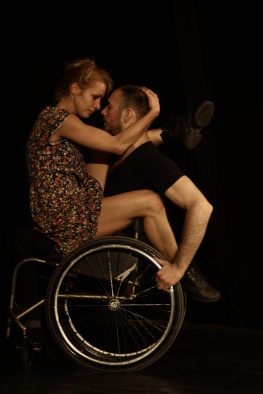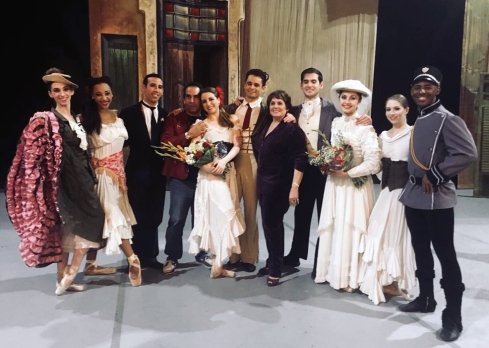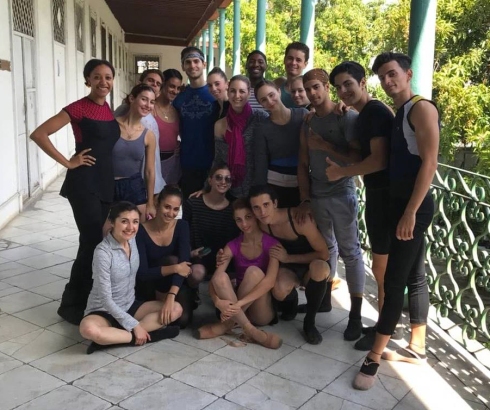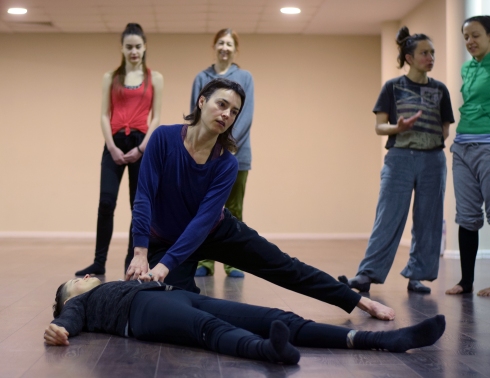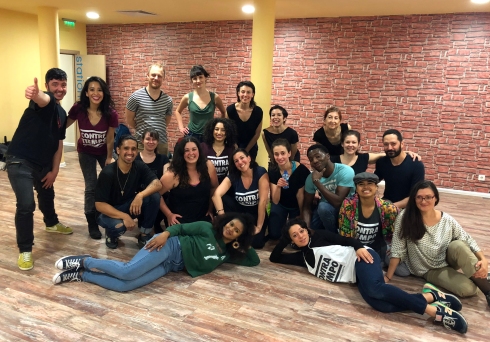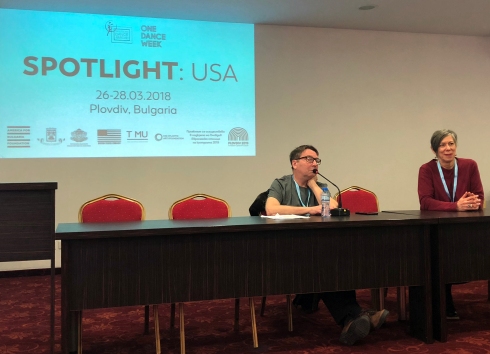Like all dance companies in our city, state, country…indeed, across the globe…BodyVox has faced its most challenging period in our 23-year history with Covid 19. We have endured and prevailed in times of economic stress, personnel injury, natural disasters, dislocation, and any number of obstacles that arise in the operation of a somewhat fragile midsized arts organization. Never could we have imagined the sustained offensive Covid-19 would mount on our company, our audience, and our community. 10 months and counting…no end in sight.
We were fortunate to hold our annual gala on March 7, 2020. We were one of the few arts organizations in Portland to hold a gala in 2020. The following Monday, March 9, Covid moved from a potential hazard to be treated with caution to a mounting emergency. We were deep in rehearsals for a major new show that was to open in 2-1/2 weeks, a collaboration with the Akropolis Reed Quintet. We busied ourselves with rehearsals while keeping an eye on the news and our Governor’s guidelines. Each day brought more bad news, more detail about the extent of the disaster inexorably approaching.
Friday the 13th we realized the time had come: we announced to our dancers and our community that we were cancelling all activities in the BodyVox Dance Center until further notice…a major blow, as 400 people come through BodyVox on any given week to take classes, hold rehearsals, and attend events.
With all our personnel at home in quarantine, we began holding daily Zoom meetings between key staff members to assess our vulnerabilities and basic actions in the face of the emergency. For a week or so, each meeting was wrought with a balance of disbelief and confidence that we could control our destiny. How will we take care of our dancers? How will we serve our audiences and community? How will we keep class revenue from collapsing? In short, how will we keep BodyVox alive?
We kept dancers on contract until their normal period ended in early summer. Several filed for unemployment. Many teachers and support staff were furloughed. Key personnel took cuts in their salaries. Throughout the summer, we laid the groundwork for a system that would be malleable and responsive to Covid guidelines when the fall season picked back up. Two major initiatives emerged that have enabled us to remain deeply connected to our community.
BodyVox has a rich history of working in film. Nearly every show of ours has involved film sequences throughout. All of our shows have been professionally recorded with multiple cameras. In August, we launched “StreamingVox,” an online streaming page featuring films of past shows. Every two-three weeks we put up a new show. All were offered for free. We phoned patrons, sent email to our lists, posted on social media…We can’t dance for you now, but here are shows you can enjoy in your home. We began to host public chats, conversations, cocktail hours with the artistic directors, interviews with collaborators. We created BodyVox Kids, a program based upon our school residency work. People in our community were starved for connection. We always knew that BodyVox was a community, but we hadn’t quantified how much people would miss it if it were closed. These digital offerings kept the relationships alive.
We soon realized we were not going to be able to perform live in the fall. We hired a brilliant filmmaker, Robert Uehlin, to work with us in creating a cinematic version of one of our audience-favorite shows: BloodyVox. Before we gathered, we formed a “Quaran-team.” After extensive discussions with dancers and technical and artistic staff, we agreed on the rules we would abide by. Minimal exposure outside the studio; no attending large gatherings; wearing masks while rehearsing; daily use of a contract tracing app. For four weeks we rehearsed and filmed in our studio and in locations around Portland. The result was the most immersive and sweeping film we have made of our work. It was a revelation to reimagine work for the camera, focusing the audience eye on what we wanted them to see from moment-to-moment.
We constructed a large outdoor screen in a shipyard owned by a supporter of BodyVox. We projected from the back of a Subaru Outback, and broadcast over a low-watt FM channel. For three weeks we hosted a drive-in movie theater for up to 60 cars a night, $50 a car. We gave them gift bags with masks, candy, and popcorn. We streamed the film for those who had a ticket but didn’t want to do the drive-in. It was a watershed event. People loved the novelty of it, loved the film, loved the safe gathering around a dance event.
Once BloddyVox was up and running, dancers and directors reconvened in the studio to film 10 more pieces for the camera. We are currently editing them for a program called Figments. We will install Figments in a pop-up art gallery, project it as a drive-in, stream it online, offer it to presenters for their audiences. We are currently filming another series, called The Pearl Dive Project. We collaborate with creatives who are not choreographers in the making of new work. We’ve worked with painters, writers, architects, musicians, designers, bloggers…a whole host of wildly creative people. Our first collaborator will be Matt Groening of The Simpsons, musician Ludovico Einaudi, local drag personality Poison Waters. More to follow.
We have launched a robust schedule of online dance classes. Many of our teachers, who were furloughed for some time initially are now back at work teaching from their home or from the empty BodyVox studio. We still hold company class within the constraints of our Quaran-team every morning, and we stream that class live as well. I think people enjoy taking class with our fine teachers and dancers while in their own homes. I wonder if they clear the furniture for the big Grand Allegro at the end!
Our ability to remain calm, work together in the reimagining of our work, find myriad ways to remain connected to our audience, deliver compelling content, and to stay in close touch with our community, have been the keys to our success in managing the crisis of Covid. We don’t know what the future will bring, if touring will resume next year, etc. We are busy, we are creative, we are learning. We are humbled by the support we receive to continue operations. We are fiercely resolved to stay true to our purpose and pivot when we must to remain vital and solvent.
To all artists, dancers, companies, organizations, I say this: Hang in there. Dance is an arts form that touches souls and forms deep connections. Your audience needs you now more than ever before. In these dark times, the light of your work is essential. There are many ways to keep the light blazing.
 – What are your positions or roles with the Nemzeti Táncszínház (National Dance Theatre Budapest)?
– What are your positions or roles with the Nemzeti Táncszínház (National Dance Theatre Budapest)?
 – Do you gravitate to particular country or region and why?
– Do you gravitate to particular country or region and why?


 The REAL Showcase Series – Solara and Luna recorded the premiere in our studio and put it to the online streaming platform. As the theatre will re-open for the audience in this October, the Project NEXT Wave will have the stage performance and also streaming the dance video version online in the Digital Dance Season.
The REAL Showcase Series – Solara and Luna recorded the premiere in our studio and put it to the online streaming platform. As the theatre will re-open for the audience in this October, the Project NEXT Wave will have the stage performance and also streaming the dance video version online in the Digital Dance Season.

